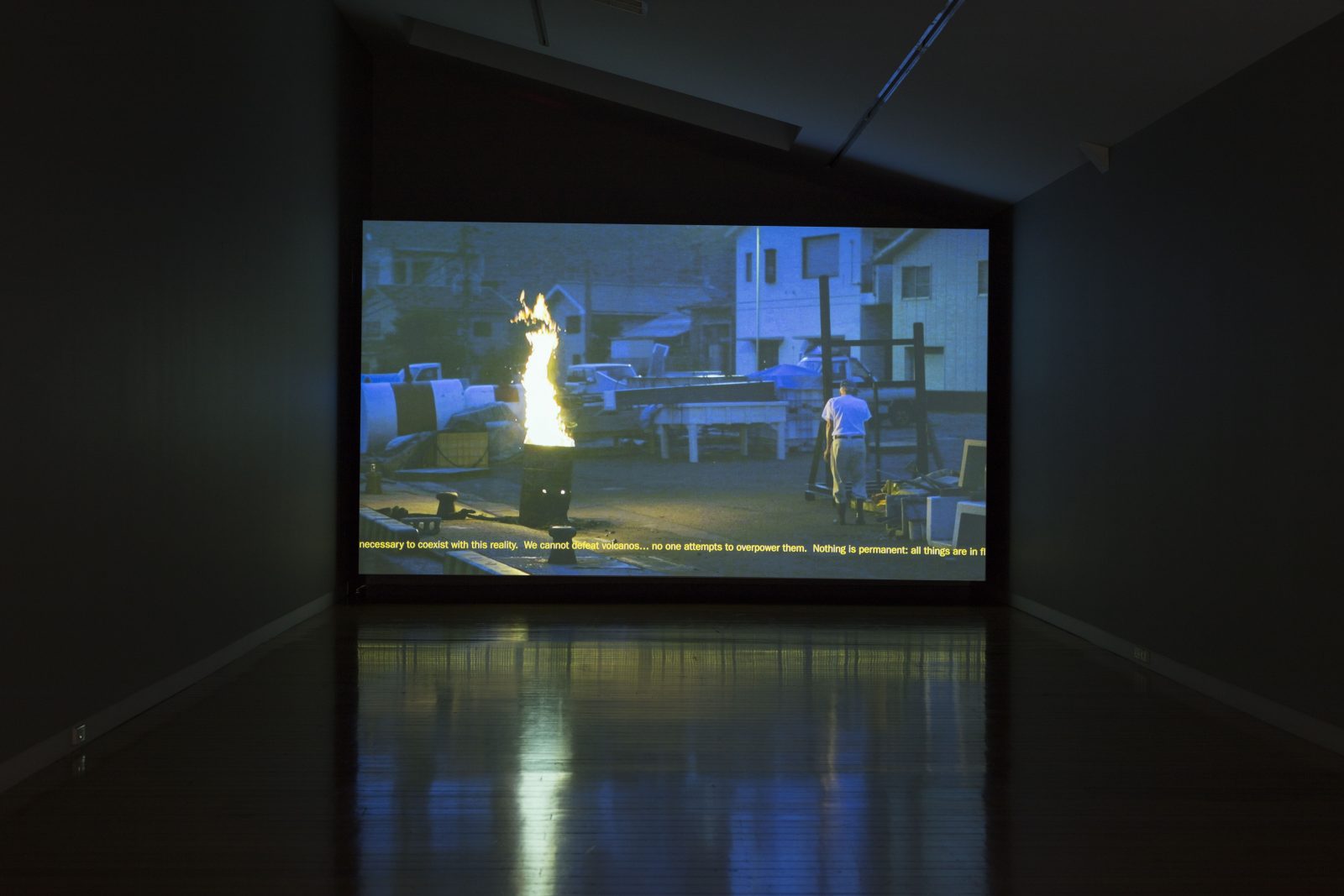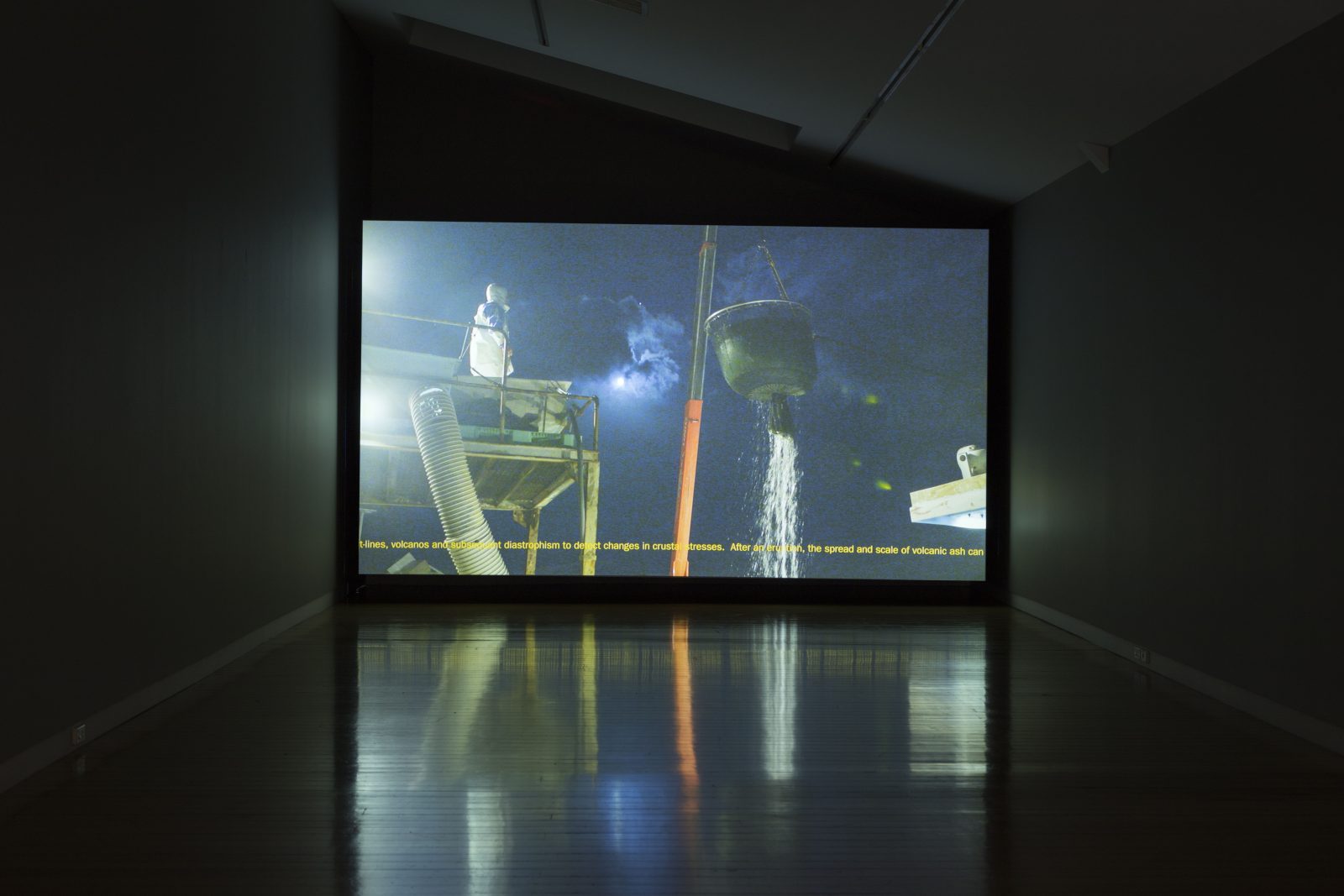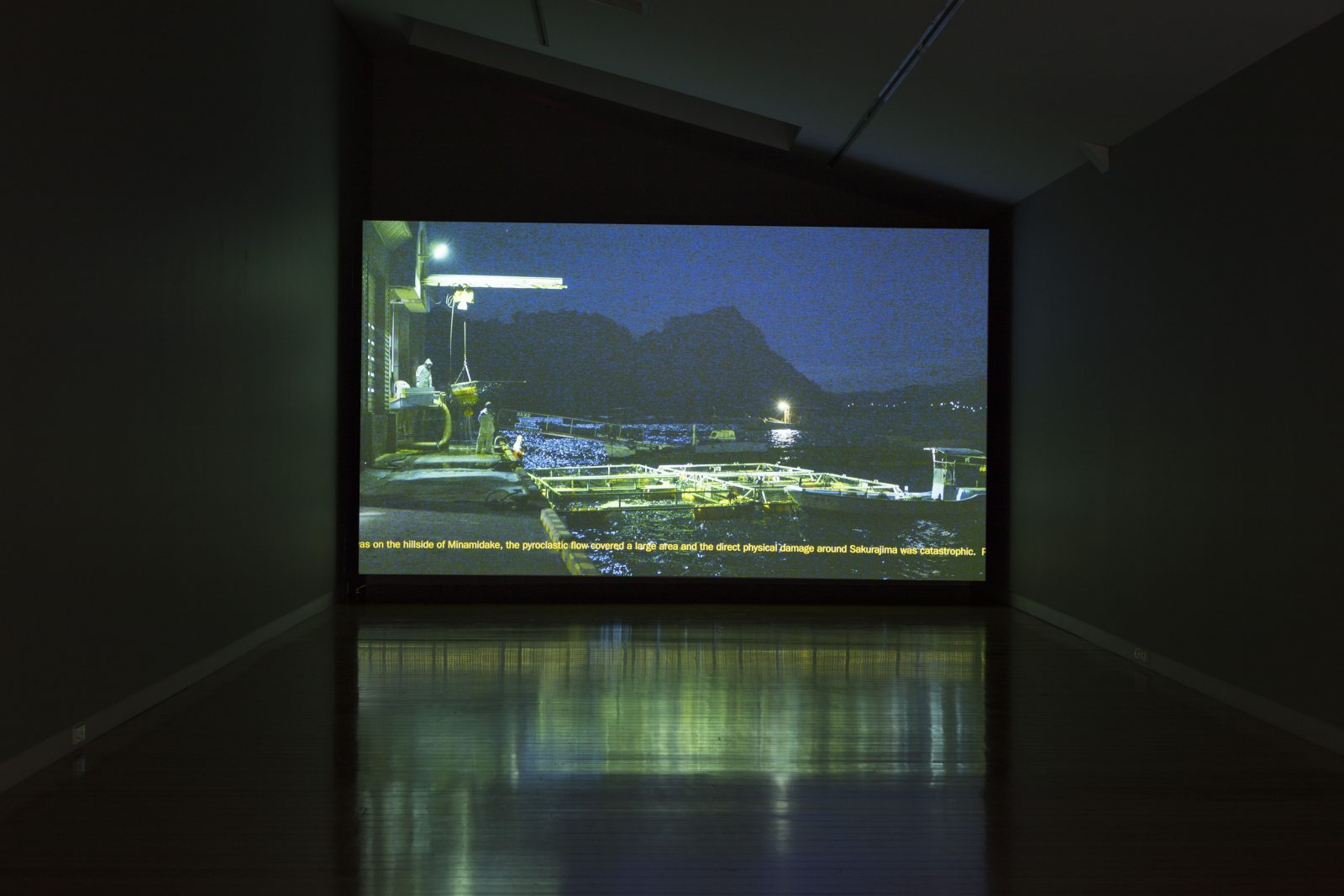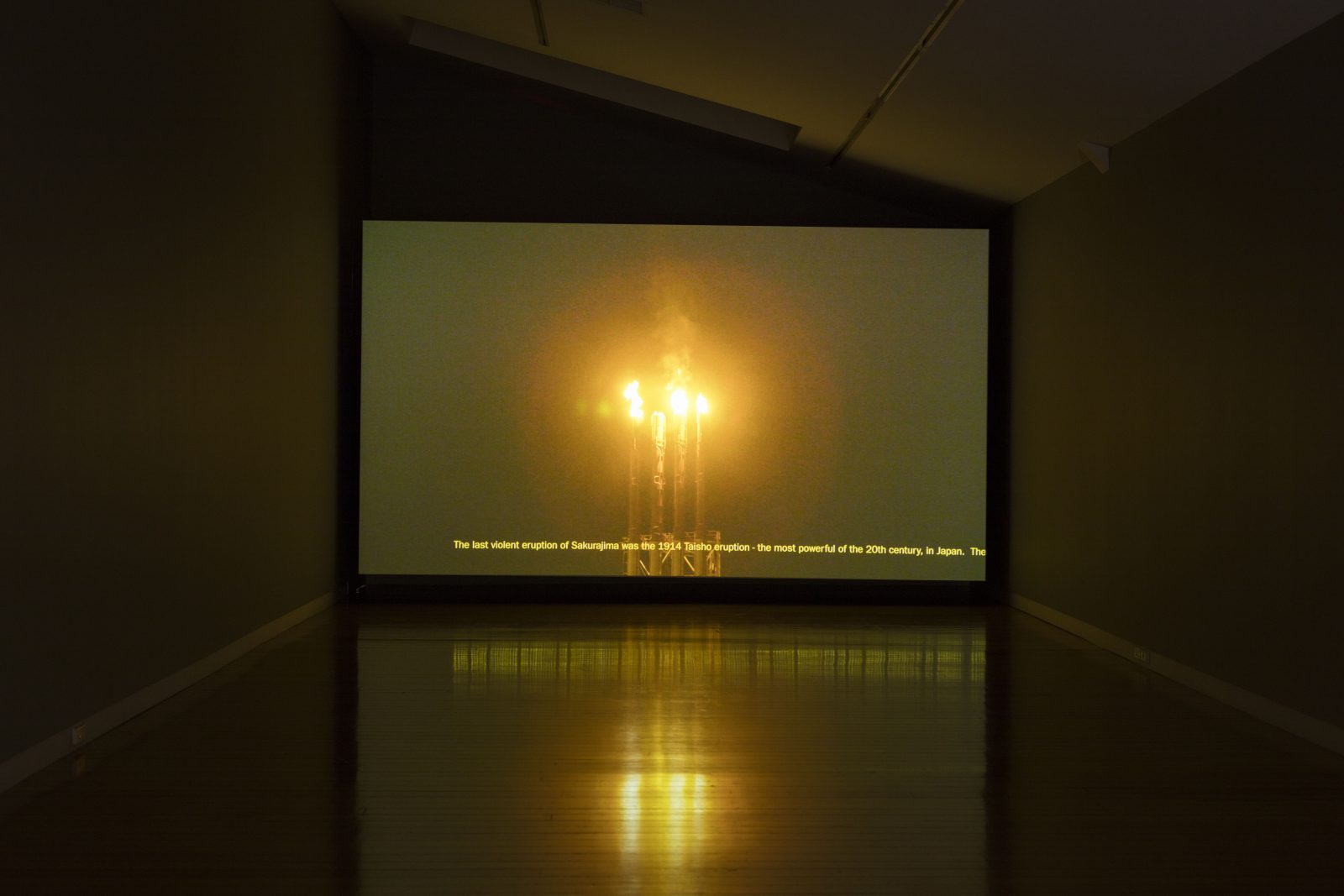Susan Norrie
Rules of Play 2009 – 2014
23 September - 22 October 2016
Susan Norrie’s film at Two Rooms centres on a single-channel HD video, Rules of Play, premiered at the Montreal Biennale in 2014. The work focuses on a region in the subarctic sea – Hokkaido in northern Japan and Sakhalin Island just off Russia’s eastern coast – which is routinely buffeted by harsh weather, while the latter has been the site of bitter territorial disputes between Russia and Japan. Further unity between the two islands is provided by the fact that the exploration of oil and natural gas is a shared resource – but drilling in the seabeds adds an element of the precarious, for the islands are situated within the Pacific Rim of Fire and are therefore prone to seismic disruption and earthquakes. Indeed, Norrie’s choice of geographic location for Rules of Play continues her interest in the fragility and tension that underlines humanity’s relationship with the environment, and the resilience that people muster in the face of natural and man-made disasters. For the last two decades, Norrie has researched and captured subjects in the Asia-Pacific region that lie in the juncture between geological, technological, environmental, indigenous, and political issues.
In Rules of Play, Norrie weaves together elements of history, folklore, geography and human industry within a visual framework that is poignantly beautiful, lyrical and poetic. Visual highlights include elegiac images of tankers ablaze with lights and gliding seamlessly through frigid Stygian water, while the LNG plants on Sakhalin Island loom out of the darkness in an almost mythical fashion, appearing simultaneously majestic and somewhat threatening while smoke drifts lazily in a blackened sky. These elegiac images are firmly contextualised by the philosophical narration provided by a Japanese volcanologist who alludes to the impact of technological advancement on indigenous communities and their environment. While the subject matter and choice of medium draws connections to documentary filmmaking, Norrie really operates in the realm of the subjective and ambiguous, as she elucidates: “what you think is the truth might not actually be the truth in these events. How do we navigate the truth? As artists, how do we say something about the world we are living in, in the 21st century, and how do we collaborate with other cultures? I’m an artist, not a journalist or a documentary filmmaker in the true sense. But, I do combine elements of those worlds. I am working in between [these worlds] and dealing with everyday survival and the humility of life.”

single-channel HD video installation with sound, 28 minutes


